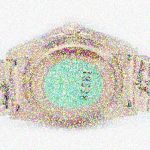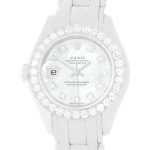The Rolex Datejust Replica Size Debate: Why It Matters
When it comes to choosing a Rolex Datejust replica, the size debate often arises between the classic 36mm and the more contemporary 41mm models. Each size has its own charm and appeal, tailored to different tastes and wrist sizes. As someone who has spent considerable time exploring the nuances of these watches, I can tell you that selecting the right size is more than just a matter of preference; it reflects your style, lifestyle, and even your personality.
How Rolex Designed the 36mm for Versatility
The 36mm Datejust was introduced in 1945 and has been a staple in Rolexes replicas lineup ever since. Its design strikes a perfect balance between elegance and functionality. The dimensions of the 36mm model allow it to fit comfortably on a variety of wrist sizes, making it suitable for both casual and formal occasions. The proportions of the watch face, along with the classic Oyster case, enhance its versatility, allowing it to be worn with a suit or a simple t-shirt. From my experience, this size often feels less intrusive on the wrist while still making a statement.
Why Collectors Still Prefer the 36mm Size
Even today, many collectors gravitate towards the 36mm Datejust. The reasons are multifaceted. First, its historical significance within the Rolex brand provides a sense of heritage that many enthusiasts cherish. Additionally, the 36mm model is often seen as a unisex watch, appealing to a broader audience. From what I’ve observed in discussions with fellow collectors, there’s a sentiment that the 36mm size represents a more classic and understated approach to luxury watches, allowing for a subtle yet sophisticated statement.
The Evolution of the 41mm Datejust
Launched in 2009, the 41mm Datejust was a significant evolution in Rolex clone’s design philosophy. While the 36mm model caters to those who appreciate a vintage aesthetic, the 41mm appeals to those who favor a more modern look. The larger size allows for bolder dial designs and more complex features, like the option for a sunburst finish or even diamond-set bezels. I’ve found that the 41mm’s increased surface area can make certain complications, like the date display, more readable, which is a practical consideration for many users.
The Bracelet and Clasp Differences Between 36mm and 41mm
The bracelets on the 36mm and 41mm Datejust models also differ significantly. The 36mm typically features an Oyster bracelet that is a bit more delicate in appearance, while the 41mm has a more robust version that complements its larger case. The clasp systems vary as well; the 41mm model often incorporates the Easylink extension system, which allows for quick adjustments to fit, especially useful during seasonal changes when wrist sizes can fluctuate. Personally, I find that the comfort and adjustability of the clasp can make a big difference in daily wear.
Resale Value: Which Size Holds Its Worth Better?
When considering resale value, the 36mm Datejust tends to hold its worth quite well due to its classic appeal and ongoing demand. However, the 41mm models are gaining ground, particularly among younger collectors who are drawn to larger watches. From my experience, if you plan to resell, it’s vital to consider the current market trends, as they can shift. Both sizes have their unique resale advantages, but the 36mm remains a timeless choice that often appeals to a wider market.
Does a Larger Watch Mean Better Wrist Presence?
Many enthusiasts argue that a larger watch provides better wrist presence, and I can see why. The 41mm Datejust certainly has a bolder look, making it more noticeable from a distance. However, it’s essential to consider your wrist size; a larger watch may overwhelm smaller wrists. Personally, I believe that presence is not solely about size but also how well the watch complements your overall style.

